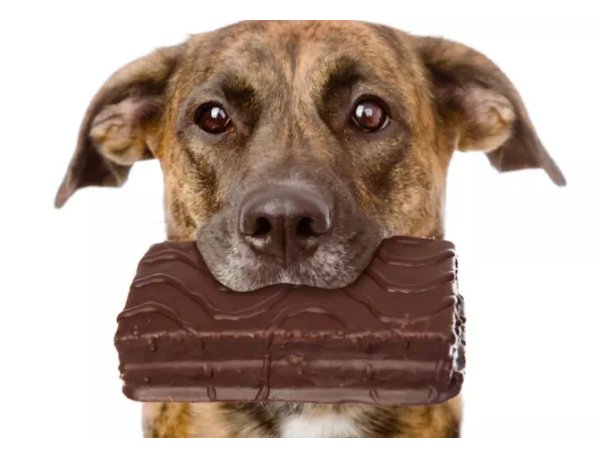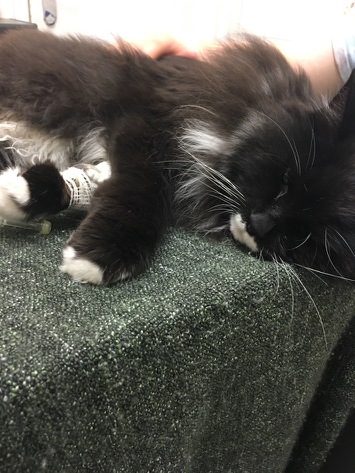Our poem is a reminder to have a pet-safe Christmas!

Twas the night before Christmas.....and at Arden House, Albert was dreaming of a new catnip mouse; when in walked the vet with some patients to see, first a kitten had fallen out of a Christmas tree. Mimi had tried to climb to the top, the tree toppled over and down she dropped! Felix had swallowed red tinsel strands, he was now being sick; an operation was planned.

With everything well and the animals fed, and Albert still asleep in his nice comfy bed; loudly the phone started to ring...’It’s my dog’ said the owner, ‘she’s raided the bin!’ Penny the Labrador’s groans could be heard; She’d eaten the bones from the cooked Christmas bird. ‘I’ll need to see her’ the vet explained as Penny was in a lot of pain.

At the hospital Penny was admitted to stay, to receive care throughout Christmas Day. The sound of the phone rang out again. ‘I’m worried about my dog!’ an owner exclaimed.
‘What’s happened?’ asked the vet concerned; she’d eaten a bar of dark chocolate he learned.
‘What’s happened?’ asked the vet concerned; she’d eaten a bar of dark chocolate he learned.
Lola the pug was next to arrive
having eaten a pack of luxury mince pies.
Raisins and grapes are unsafe for pets,
With the patients all treated and settled,
the vet went to put on the kettle.
When up on the roof, the sound of hooves -
the vet went to put on the kettle.
When up on the roof, the sound of hooves -
the arrival of somebody special!
'I have a gift for Albert the cat'
greeted Santa wiping his boots on the mat.
' And one of my reindeer has injured his foot,
would you be so kind to take a look?'
would you be so kind to take a look?'
The vet heard of Dasher's plight,
he'd slipped on ice when he landed from flight.
An x-ray showed no broken bones, the reindeer was fit to fly to more homes.
With tablets prescribed to help Dasher's pain,
it was time for Santa to take the reins.
'Merry Christmas to you, Ho Ho Ho' beamed Santa as he prepared to go.
With Rudolph's nose providing the light,
off whizzed his sleigh into the night!
he'd slipped on ice when he landed from flight.
An x-ray showed no broken bones, the reindeer was fit to fly to more homes.
With tablets prescribed to help Dasher's pain,
it was time for Santa to take the reins.
'Merry Christmas to you, Ho Ho Ho' beamed Santa as he prepared to go.
With Rudolph's nose providing the light,
off whizzed his sleigh into the night!
...............................................
Other hazards;
🎄Bottle corks, corn on the cob, cocktail sticks, cracker toys, ribbon and tinsel can be dangerous if swallowed. Ensure that they are tidied away or kept out of reach of pets.
🎄Ingestion of batteries is more common at this time of year. If the battery is chewed and pierced it can cause chemical burns and heavy metal poisoning. If they are swallowed whole it is possible they will cause an obstruction. All batteries are potentially toxic so if you suspect your dog or cat has chewed or swallowed a battery - please call us.
IN AN EMERGENCY
If you think that your pet may have eaten something that they shouldn't have then swift action is necessary.
Follow these four simple steps:
Step 1 - Prevent your pet from eating any more.
Step 2 - Phone your vet immediately!
Step 3 - Stay calm and follow your vet's instructions.
Step 4 - Collect the relevant wrapping and packaging.
Make a note of our phone number and call us immediately -
01895 633600
Further advice
Christmas time often means a busy home, with friends and family coming together in seasonal spirit. Remember that new faces and more noise can be scary for your pet, so it’s a good idea to provide them with a safe room so they can escape and be put at ease if it all becomes too much. Be mindful of the front door opening with guests arriving and leaving. Make sure that dogs can't run out! It’s also important to maintain your pet’s normal routines, especially with feeding and exercise, to avoid them becoming too unsettled.
DISCLAIMER:
The contents of the Arden House Animal Hospital


















